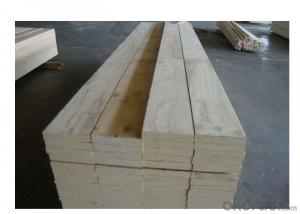When it comes to choosing the right plywood for your next woodworking project, one of the first decisions you’ll need to make is the thickness of the plywood. Two common options are 15/32-inch and 19/32-inch plywood. But which one is right for you? Let’s dive into the details and help you make an informed decision.
The Basics: Understanding Plywood Thickness
Before we get into the specifics of 15/32-inch and 19/32-inch plywood, it’s important to understand what plywood thickness means. Plywood is made up of thin layers of wood veneer, called plies, that are glued together. The thickness of the plywood is determined by the number of plies and the thickness of each ply. A 15/32-inch plywood has a thickness of approximately 11.1 millimeters, while a 19/32-inch plywood is about 14.3 millimeters thick.
Why Thickness Matters
Thickness can have a significant impact on your project. Thicker plywood is generally stronger and more rigid, making it ideal for structural applications or when you need a sturdier surface. On the other hand, thinner plywood is lighter and more flexible, which can be beneficial for curved surfaces or when weight is a concern.
Comparing 15/32 vs 19/32 Plywood
Now that we’ve established the basics, let’s compare the two types of plywood in terms of their properties and applications.
Structural Strength
If you’re working on a project that requires a strong and stable base, 19/32-inch plywood is the way to go. With its extra thickness, it can handle more weight and provide better support for heavy objects. This makes it perfect for furniture construction, shelving, and other load-bearing applications.
Flexibility and Ease of Use
While 19/32-inch plywood is great for strength, 15/32-inch plywood has its advantages too. It’s lighter and more flexible, making it easier to handle and work with, especially for smaller projects or when you need to make curves or bends in the plywood. This is why it’s often used for cabinetry, furniture trim, and other decorative applications.
Cost Considerations
Another factor to consider is the cost. Generally, 19/32-inch plywood is more expensive than 15/32-inch plywood due to its greater thickness and strength. If you’re on a budget, you might want to opt for the thinner plywood, but be aware that you may be sacrificing some structural integrity.
Aesthetic Appeal
The thickness of the plywood can also affect the final look of your project. Thicker plywood can give a more robust and substantial appearance, while thinner plywood can create a sleeker, more refined look. Consider the overall design of your project and how the plywood’s thickness will contribute to that aesthetic.
Availability and Sustainability
When choosing between 15/32 and 19/32 plywood, consider the availability of the material in your area. Some types of plywood may be harder to find than others. Additionally, think about the environmental impact of your choice. Thinner plywood can be more sustainable as it uses less wood, but this may not always be the case depending on the manufacturing process and the source of the wood.
Making Your Choice
Ultimately, the choice between 15/32 and 19/32 plywood will depend on your specific project needs. Consider the strength, flexibility, cost, aesthetic appeal, and sustainability of each option before making your decision. Remember, there’s no one-size-fits-all answer, and the best choice for one project may not be the best for another.
Tips for Working with Plywood
Once you’ve chosen your plywood, here are some tips to help you get the most out of your material:
– Preparation: Make sure your plywood is free of debris and smooth before starting your project.
– Cutting: Use sharp tools and take your time to ensure clean, straight cuts.
– Sanding: Smooth out any rough edges or surfaces with sandpaper to prevent splintering.
– Finishing: Apply a finish that complements the plywood’s grain and color to enhance its natural beauty.
– Storage: Store your plywood flat and dry to prevent warping or damage.
Wrapping Up
Choosing the right thickness of plywood is crucial for the success of your woodworking project. Whether you opt for 15/32-inch or 19/32-inch plywood, make sure it aligns with your project’s requirements. And don’t forget to have fun while you’re at it – woodworking is as much an art as it is a craft.
So, what will it be? The robustness of 19/32-inch, or the versatility of 15/32-inch? The choice is yours, and the possibilities are endless.

